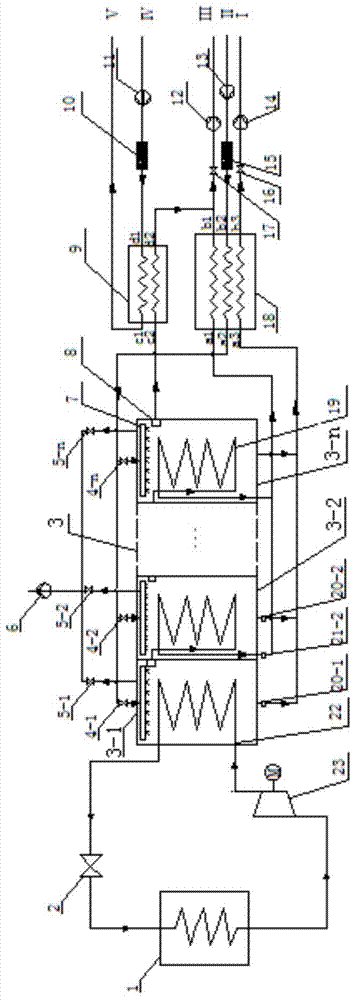Method and system for co-production of air conditioner and advective seawater desalination device
An advection and seawater technology, applied in chemical instruments and methods, seawater treatment, general water supply conservation, etc., can solve problems such as inability to obtain stable waste heat sources, inability to meet water supply applications, and consumption of primary energy, so as to improve energy utilization efficiency and fresh water yield, good seawater fresh water yield, less time and energy consumption
- Summary
- Abstract
- Description
- Claims
- Application Information
AI Technical Summary
Problems solved by technology
Method used
Image
Examples
Embodiment Construction
[0034] The present invention will be described in further detail below in conjunction with the accompanying drawings and specific embodiments.
[0035] like figure 1 As shown, the air conditioner and seawater desalination cogeneration method and system of this embodiment include an air conditioner with a refrigeration cycle unit and a flow-type low-temperature multiple-effect distillation device.
[0036] The refrigeration cycle unit includes a compressor 23 , a condenser 22 , a throttling device 2 and an evaporator 1 . The outlet of the compressor 23 is connected to the inlet of the condenser 22, the outlet of the condenser 22 is connected to the inlet of the throttling device 2, the outlet of the throttle valve 23 is connected to the inlet of the evaporator 1, and the outlet of the evaporator 1 is connected to the inlet of the compressor 23, forming a complete refrigeration cycle.
[0037] The low-temperature multi-effect distillation device includes: n-effect distillation...
PUM
 Login to View More
Login to View More Abstract
Description
Claims
Application Information
 Login to View More
Login to View More - R&D
- Intellectual Property
- Life Sciences
- Materials
- Tech Scout
- Unparalleled Data Quality
- Higher Quality Content
- 60% Fewer Hallucinations
Browse by: Latest US Patents, China's latest patents, Technical Efficacy Thesaurus, Application Domain, Technology Topic, Popular Technical Reports.
© 2025 PatSnap. All rights reserved.Legal|Privacy policy|Modern Slavery Act Transparency Statement|Sitemap|About US| Contact US: help@patsnap.com

